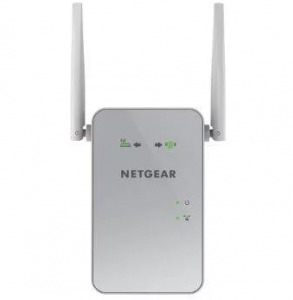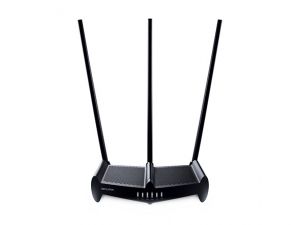Ever had moments where you find your WiFi has dropped out when moving from one room to another? While WiFi can be convenient, there is a limit to how far it can reach, not to mention that there are things that can impact the signal and cause it to drop off.
In this guide, we’ll take you through the basics of WiFi and why you might be experiencing a weak or limited signal.
Shop WiFi routers and modems
On this page:
NBN plans you might like
Looking to bump up your WiFi speeds? It may be worth looking for a new NBN provider or plan. Check out some of the providers and plans available in the table below. The table contains affiliate links.
The following table shows a selection of sponsored unlimited data Standard Plus Evening Speed (NBN 50), and Premium Evening Speed (NBN 100) plans on Canstar Blue’s database with links to referral partners..
 |
1 Month Contract (1 month min. cost $68.90) Typical evening speed of 50Mbps
|
Unlimited Data/month |
$68.90 Cost/month |
Go to Site |
 |
1 Month Contract (1 month min. cost $65.00) Typical evening speed of 100Mbps
|
Unlimited Data/month |
$65.00 Cost/month |
Go to Site |
 |
Superloop | Lightspeed 1Gb offer 1 Month Contract (1 month min. cost $85.00) Typical evening speed of 90Mbps
|
Unlimited Data/month |
$85.00 Cost/month |
Go to Site |
Unlimited Home Standard (NBN 50) Plans
The following table shows a selection of published unlimited NBN 50 plans on Canstar Blue’s database, listed in order of standard monthly cost (excluding discounts), from the lowest to highest, and then by alphabetical order of provider. Use our comparison tool above to see plans from a range of other providers. This is a selection of products with links to referral partners.
Unlimited Home Fast (NBN 100) Plans
The table below shows a selection of published unlimited NBN 100 plans on Canstar Blue’s database, listed in order of monthly cost, from the lowest to highest, and then by alphabetical order of provider. Use our comparison tool to see plans from a range of other providers. This is a selection of products with links to referral partners.
How far does WiFi reach?
WiFi uses frequency bands to deliver a signal, with most modems likely using 2.4Ghz and 5.0Ghz bands. The 2.4Ghz band can be stretched further than the 5.0Ghz band, with a potential reach of 46m indoors. While the 5.0Ghz band can only reach about half of that distance, it will most likely deliver faster speeds over the shorter distance.
This is because 5.0Ghz bands are more susceptible to obstructions and appliance interference, so by the time this reaches the living room or balcony, the signal can be patchy at best and potentially drop out.
The way to get the best of both worlds is to place a dual-band router that supports both 2.4Ghz and 5.0Ghz bands near technology that would best utilise the faster speeds. This includes technology such as gaming consoles and PCs. This would then leave the 2.4Ghz bands free to be used for phone and tablets, making the most out of your home WiFi.
The technology used for the routers can also impact how far your WiFi can reach. Modern routers with 802.11n or 802.11ac classifications on 2.4Ghz bands can theoretically only reach about 25m indoors. While older, slower, routers on the 802.11a classification generally might have a better range, but at the expense of speed.
If you’re experiencing slow speeds and drop outs and your modem is rather old, it might be worth considering a new modem. The WiFi technology in devices, such as computers, can also have an impact on how solid the performance of the WiFi connection is, so keep this in mind if you have unreliable WiFi.
What can obstruct or impact a WiFi signal?
The distance between your modem-router and the device trying to use the WiFi can obviously impact the signal but that’s not the only thing that can impede how well your WiFi performs. The most common things that WiFi signal can be impacted by include:
- Walls and obstructions: These can block the signal and prevent WiFi from reaching certain parts of the house, especially if the router is placed near a wall. To avoid this, ensure your router is in a fairly unobstructed part of the home and in a position as central as possible.
- Weather: Electrical storms can interfere with the electromagnetic signals that WiFi emits and this can wreak havoc on wireless networks. Using WiFi outside, such as in your backyard, is also going to impact the strength of your signal.
- Appliances: Similar to weather, appliances can affect the WiFi signal too. An example of an appliance that would interfere with the range of the WiFi would be a microwave because it emits a radio signal. To reduce this impact, it’s best to keep your modem-router away from appliances.
- Antennas and direction: The direction of your device can also impact how much of a range your WiFi signal has, but a directional antenna can help reduce this.
How can I improve my WiFi range?

While keeping your router in a fairly central location or near where devices that use the WiFi are — such as the living room — can improve WiFi performance, there are some products that can improve your WiFi range or boost your WiFi signal.
- WiFi extender or booster
- Powerline adaptors
A WiFi extender (also referred to as a WiFi repeater or WiFi booster) can be plugged into an electrical socket, which then picks up your WiFi signal and re-transmits the signal throughout the home. They can cost as little as around $40 and up to the hundreds, with the more expensive devices delivering speeds up to 2.2Gbps. However, boosters can severely affect latency or ‘ping’ scores, which can be bad news for gamers who need millisecond-precise responsiveness from their WiFi.
Powerline adaptors are purchased as a pair and are plugged into two power points in different ends of the home, meaning that WiFi can be transmitted across powerlines. Adaptors are usually a little bit more expensive and can often cost over $100, but are arguably more effective than boosters. In order for these adaptors to work, they need to be on the same powerline, and considering homes can have multiple lines, you might want to check this before you purchase an adaptor that won’t work for your home.
What is long range WiFi?

If you’re living in a large home or need WiFi out in the backyard, a long range WiFi router may be ideal. However, the catch is that speeds can suffer as a result.
TP Link is a wireless modem brand that offers two ‘high powered’ modems – the TL-WR941HP and the TL-WR841HP. TP Link claims its high-powered modems are capable of covering up to 10,000m² – or one hectare – of range.
These high-powered models support between 300-450Mbps wireless speeds, and TP Link claims the 9dBi high-gain antennas are capable of cutting through walls and obstacles to deliver more powerful signals even in far reaches of the home.
However, there is pretty much always a compromise. Even with high-powered modems, speeds can still suffer. The modems mentioned above are not capable of gigabit speeds and their speeds may still suffer the further you are away from the modem. However, these routers are generally at the cheaper end of the scale, so they may be worth a go.
Is a good WiFi range really important?
If you frequently experience internet connection drop outs, rather than blaming your internet provider, you might want to first check if it’s an issue with your internet router range. Consider how close your device is to the router, if there are any obstacles and look at how strong the WiFi signal is. If the signal is down to a couple of bars when you experience slow internet, you may need to look into optimising your WiFi range.
Following the tips in this guide may help you to get to the bottom of why you are having issues with your WiFi connections; however, if you are still having problems despite minimising obstructions and disruptions to the signal, there might be another issue. When troubleshooting, make sure you also test connections on different devices and at different locations within the home to ensure it’s not an issue with the device itself.
You might need to look into boosters or adaptors, but also consider the age of your router as another reason for slow performance and whether you might need to upgrade. If it’s clear that the issue isn’t with your WiFi signal distance or router, you may need to have a chat to your internet provider and see if there are any issues with your home’s internet connection.
Even if your home WiFi performance is fairly decent and consistent, it’s still best practice to ensure you place your WiFi router in an ideal location — away from appliances and walls, and closer to where the internet is mostly used, such as the living room, study or bedroom. WiFi range may sound complicated, but following a few simple steps can mean the difference between slow video buffering or enjoying your favourite show in glorious high definition.



Share this article